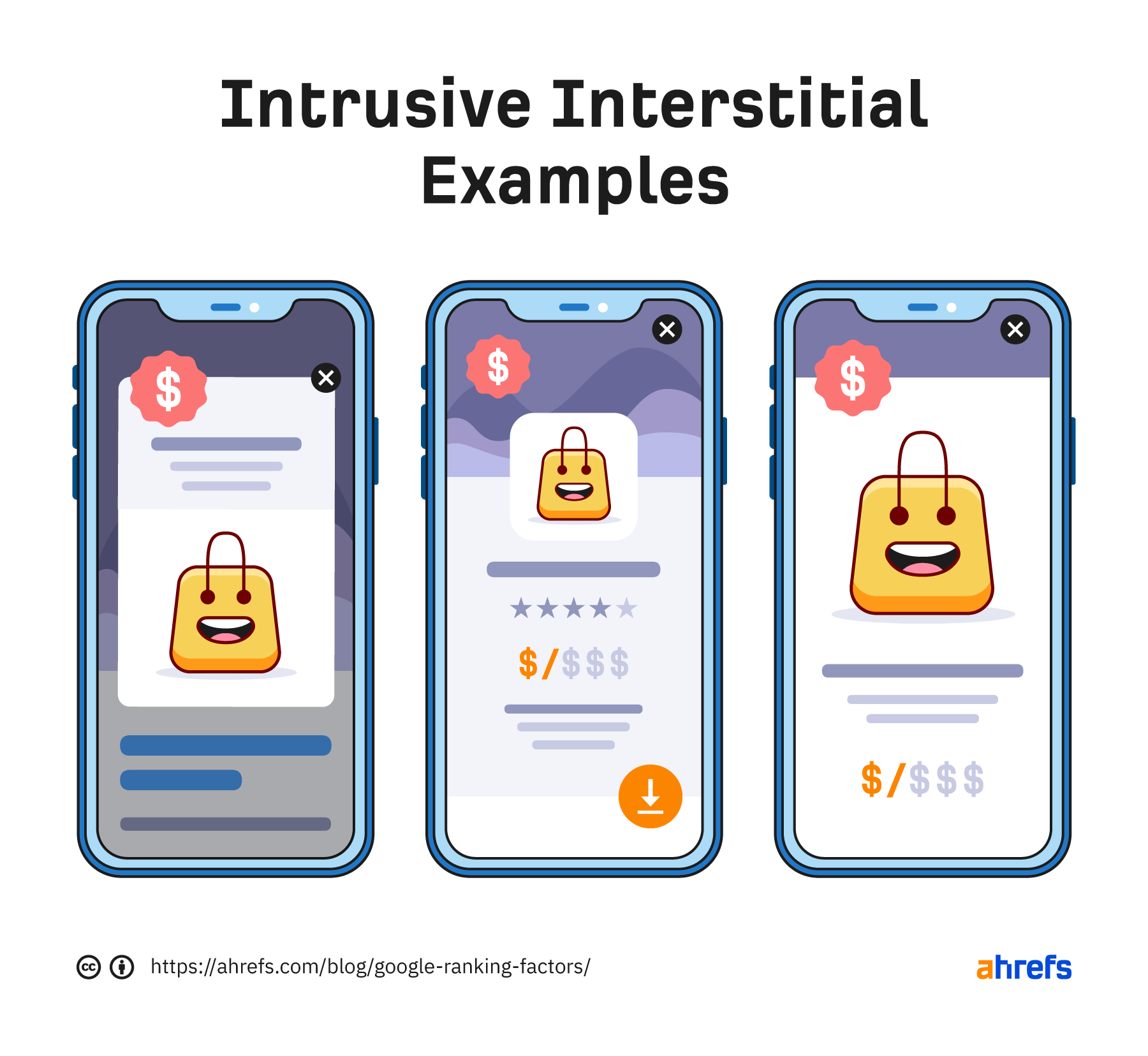Interstitial ad
What is an Interstitial Ad?
Interstitial ads are full-screen advertisements that typically appear as pop-ups, covering the interface of a website or mobile app. These ads are often associated with mobile apps, where they tend to appear at transition points or during breaks. However, the term ‘interstitial ads’ can also refer to large, intrusive pop-ups that cover content on a webpage.
Do interstitial ads impact SEO?
Interstitials often result in a frustrating user experience since they obstruct the entire screen on mobile devices. It can lead to high bounce rates and low engagement and conversion rates.
That’s why, Google declared intrusive interstitials a negative ranking factor for mobile searches—as part of the Page Experience signals update in 2017. With this update, the pages that don’t allow easy access to content when a user transitions from mobile search results, may lose ranking.
Here’s what intrusive interstitials look like:

However, the pages where interstitials may be required by the law (e.g., cookie consent and age-verification pop-ups) aren’t affected by this update as long as Googlebot can crawl and index them.
You can easily check it by searching fragments from the content in Google Search. If the page shows up in search results, Google has successfully crawled and indexed it. Alternatively, you can use our free Ahrefs Webmaster Tools to audit your site and see if these pages have any crawlability issues.
SEO best practices for interstitial ads
Here are some tips to use interstitials the right way.
1. Avoid intrusive interstitials
Just like they do for users, intrusive interstitials make it difficult for search engines to access and understand your content. This can negatively impact search performance.
Therefore, Google suggests:
- Use banners that occupy a small part of the screen—unless you’re legally required to display interstitials.
- Don’t obscure the main content with pop-ups.
- Don’t redirect users to another page to get their consent or information.
2. Prioritize user experience
Keep user experience as your topmost priority when implementing interstitial ads. Here’s how you can do that:
- Consider the placement: Display interstitials only at the natural transition points such as page-to-page navigation or between game levels. Otherwise, it can interrupt the users’ flow.
- Make them easily dismissible: Provide users with a clear and easily accessible option to close the interstitial ad. This ensures users have control over their browsing experience.
- Optimize loading times: Ensure that interstitial ads load quickly to prevent unnecessary delays in page or app load times. Slow-loading ads can frustrate users and negatively impact your SEO.
- Use timed pop-ups: Limit the time for how long the interstitials are displayed. For example, you can set a three or five-second timer before the pop-up closes automatically. This gives users a choice if they want to click the pop-up to visit what you’re promoting.
FAQs
How to manage mandatory interstitials?
Google can usually differentiate between legal and promotional interstitials. So, mandatory pop-ups are exempted from the “intrusive interstitials” penalty. However, note that Googlebot can’t click buttons or fill in forms. Hence, you need to ensure that the page content is crawlable. You can do that by using JavaScript or CSS to show interstitials on top of the already-loaded page.